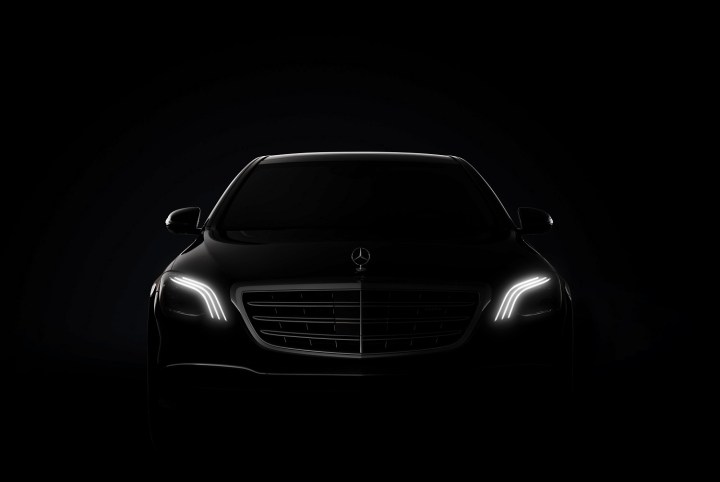
Currently, the three-year old S-Class can accelerate, brake, and steer on its own in many different conditions as long as the driver keeps his or her hands on the steering wheel. Mercedes has confirmed the updated model is capable of navigating more complex situations that require slowing down, such as bends in the roadway, roundabouts, intersections, toll booths, and highway exits.
More advanced sensors and cameras make the new features possible. The S-Class also analyzes map and navigation data to decide when it needs to slow down. It’s not fully autonomous; you won’t be able to practice playing the epic guitar solo in Lynyrd Skynyrd’s Free Bird during your commute to and from work. But, the updated S-Class is able to assist the driver in more situations, which makes driving more safe and less stressful.
“We are approaching the goal of automated driving more purposefully and faster than many people suspect. From the autumn, the new S‑Class will be able to support its driver considerably better than all systems which have been available to date,” promised Michael Hafner, head of Automated Driving and Active Safety at Mercedes‑Benz.
The S will receive the vehicle-to-vehicle (V2V) and vehicle-to-infrastructure (V2I) tech already offered on the latest E-Class. It’s able to “talk” to other Mercedes nearby when it detects a potential hazard such as ice on the road. The E-Class also lends its bigger sibling the remote-controlled parking technology that makes maneuvering into a tight space child’s play.
Mechanically, the S-Class will inaugurate Mercedes’ first straight-six engine in nearly two decades. A variant of AMG’s twin-turbocharged 4.0-liter V8 engine will replace the current car’s 4.7-liter eight, a move expected to yield more power and much better fuel economy. Exact technical specifications won’t be announced until the beginning of the Shanghai show.
The hot-rodded S63 and S65 variants will each receive a bump in power, but AMG isn’t planning a midrange, 43-badged variant of the S-Class for the time being. A plug-in hybrid model capable of driving for about 31 miles on electricity alone will join the lineup a little later in the production run, according to British magazine Autocar, and the updated S-Class will become the first Mercedes to receive a 48-volt mild hybrid system.
The updated Mercedes-Benz S-Class will debut next week at the Shanghai Auto Show, and Digital Trends will be on-location to bring you full specifications and live images of it. It will arrive in United States showrooms later this year as a 2018 model. Look for a pricing announcement and details about the U.S.-spec model before then.
Updated on 04-13-2017 by Ronan Glon: Added new technical specifications.
Editors' Recommendations
- Mercedes G580 electrifies an off-road icon
- 2025 Mercedes-Benz EQS sedan gets new face, bigger battery
- How do you crash-test an EV with an 871-pound battery? Mercedes showed us
- Mercedes-AMG EQE SUV first drive review: a better electric SUV
- 2024 Mercedes-AMG S63 E Performance first drive review: high-performance plug-in




